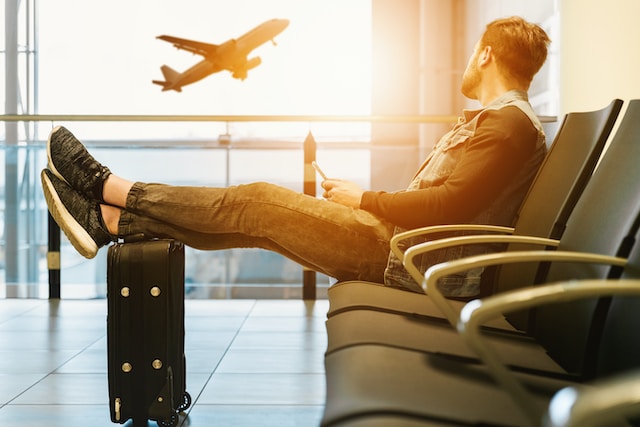That you’ve made the decision to go is fantastic! It’s an exciting decision to travel to a new place, but there are a lot of factors to take into account when arranging a vacation, so it can easily become overwhelming. I’ve found that simplifying the procedure into manageable phases helps to make it stress-free and enjoyable.
Here are nine simple stages to help you plan your trip, so you don’t have to tackle it all at once.
Step 1: Select a Location
Selecting a location is the most crucial part of organizing a trip, but it can be difficult to choose just one given the abundance of alternatives. First, figure out how much you can afford and how many days you have available. Is it feasible to plan a significant overseas trip, or would it make more sense to stay a little closer to home?
Furthermore, certain places cost more than others. Find out the average daily cost of a few destinations that pique your interest by doing some research.
Step 2: Find Motivation
Being enthused and motivated will make the remaining legwork lot simpler! Use Pinterest, Instagram, or blogs to uncover stunning images and interesting information about your trip to help sustain your interest. This will help you come up with suggestions for particular places you might want to go or stay.
Step 3: Choose When to Leave
There are frequently high and low seasons for destinations. The greatest weather and the greatest selection of activities and lodging are typically found during high seasons. But it also means throngs of people and frequently increased costs. Low seasons can be more affordable and provide you greater quiet, but you might miss out on seasonal activities, the weather might be less ideal, and many hotels and restaurants close during that period.
Step 4: Examine Your Expenses
Make a budget in advance, accounting for potential visa and vaccine charges. Prices for transportation (buses, car rentals, etc.), admission to cultural attractions and natural areas, and menu prices for restaurants you might want to try can all be found online. You’ll be able to book and arrange everything else with more assurance once you know your budget.
Step 5: Reserve Your Aircraft
You may look for the greatest deals and schedules across all airlines by using websites like Going or Airfarewatchdog. To be informed when the costs of the flights you’ve searched for have decreased, you can even set up fare alerts.
Make sure to check airfares to and from the surrounding area as well as your direct destination when making travel arrangements. Even if two airports are close to one another, the cost of a flight can fluctuate significantly between them.
Step 6: Make Hotel Reservations
Booking.com offers a similar feature to airfare finders in that it enables you to compare accommodations to find the best deal. Similar services are provided by Airbnb, except all of the accommodations are owned by hosts who allow visitors to rent their space, which can give the experience a special, intimate feel.
Step 7: Make an Activity Schedule
Make a schedule of things to do now that you know how to get there and where to stay! You can gain inspiration from blogs or websites such as TripAdvisor. Next, choose your daily activities according to the distance, time, and intensity of the activity. Of course, it’s okay to not feel pressured to fit in every activity; sometimes you just need time to unwind or explore!
Step 8: Purchase Travel Guard Protection
Travel insurance is something that many people are unaware of, but it can literally save lives. It will pay for cancellation fees, so you will recover the majority of your costs for reserving your hotel and airfare in the event of an emergency that prevents you from traveling. Certain policies even cover emergency medical costs.
Step 9: Begin to Put Money Aside
Now that everything else has been taken care of, begin saving money using whichever means suits you best, whether it be a cash jar or a savings account. You’ll be considerably more stress-free and have financial stability for the vacation if you’re aware of your spending patterns and understand your budgetary objectives!
I suggest configuring your bank account to automatically transfer a specified amount to a savings account every two weeks or month if you have trouble saving intentionally. In this manner, you can save without giving it a second thought!





It is important to plan ahead before traveling, as this can not only save time but also save some money.
These suggestions are very practical, planning in advance avoids unnecessary trouble.
These suggestions have helped me better understand how to relax.
The suggestions given are very practical and indeed a good guide for making travel plans.
This article has given me a deeper understanding of the importance of travel planning.
Thank you to the author for sharing, which has given me more inspiration for developing travel plans.
Rich in content, providing detailed guidance on the formulation and execution of travel plans.
Very helpful advice, I feel it can make the trip smoother.
This article made me understand that making travel plans requires sufficient preparation in advance.
Thank you to the author for sharing, which has taught me how to develop a comprehensive travel plan.
The suggestions given are all very relevant and very helpful for those who want to develop a perfect travel plan.
The content is detailed and comprehensive, considering all aspects of the travel plan, which is very valuable for reference.
This article provides many practical suggestions, which have given me a clearer understanding of how to make travel plans.